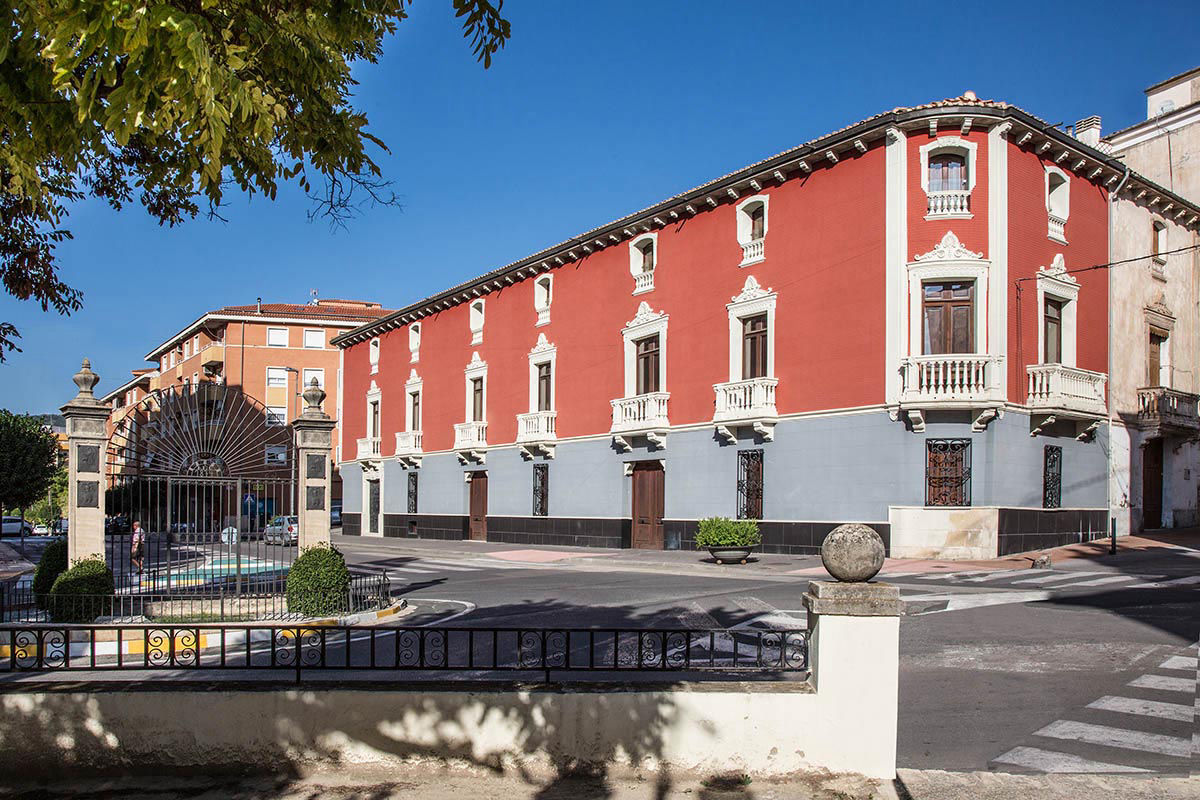
Audioguide The Onil Doll Museum

Welcome
Welcome to the Onil Doll Museum!!! This audioguide will show you how dolls were produced here.
Onil is the Doll Town par excellence in Spain, where 80% of the home-produced dolls are made.
In this town the most accepted manufacturers in the country are located such as Antonio Juan Dolls, Pérez Ladybug, Así, Berjuan, Famosa, Belonil, Falca Dolls, Rauber Dolls, Toyse, Nines d'Onil, Playmobil, or educational games like the company Miniland among others.
The museum has over 1,600 dolls dating from the eighteenth, nineteenth and twentieth centuries. There are unique pieces already restored and original ones in very good condition. Collector´s dolls such as Nancy and Barriguitas, Famosas dolls such as Leonor or Baby Greedy are all today’s designs from Onil companies, The Great City of Playmobil with over 10,000 pieces, the unique collection of Pérez Ladybug or the Room of Their Majesties the Three Wise Men. Real-life dolls can also be found such as Catherine, Marieta and Gassy, which often appear to show the museum to the children.
The museum is also actively involved in social programs such as the "Comenius" project in order to improve the English proficiency of students and teachers through New Technologies, the restoration of traditional games and toys, or the project "The Awakening of the Three Wise Men, Give away a Toy, Get a Will", in which children from Onil share a new toy given by the Three Wise Men with kids who are hospitalized in order to create big toy libraries in health centers.
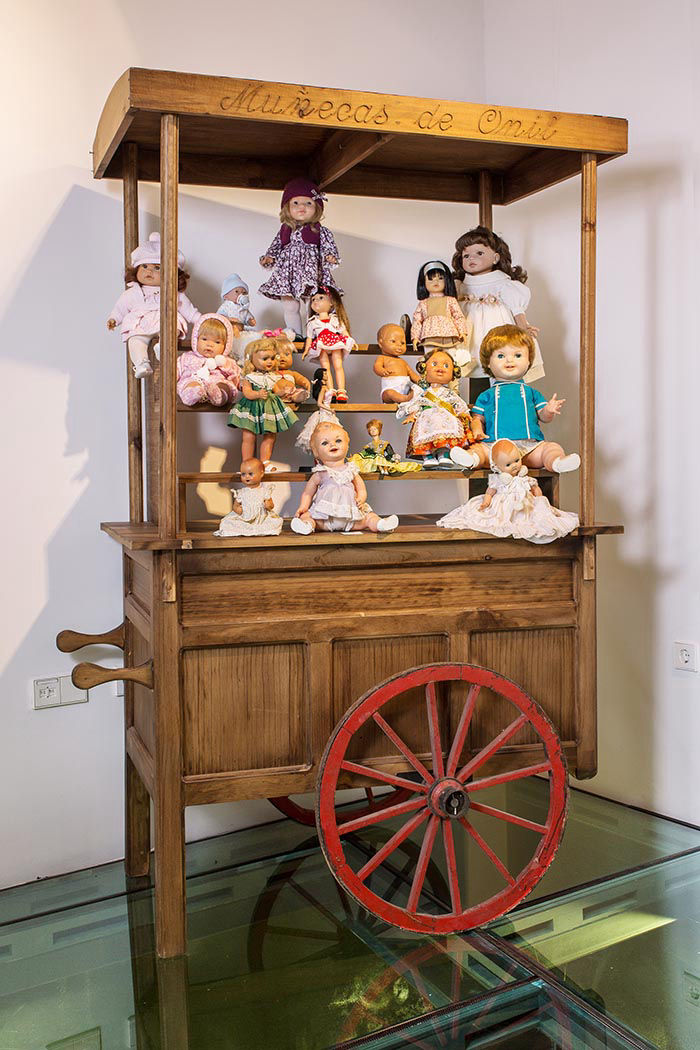
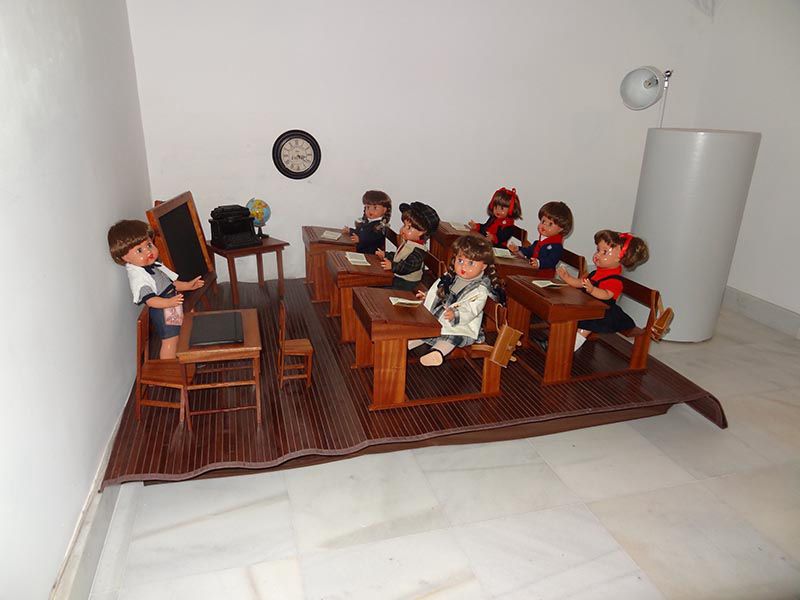
The House of L'Hort and Cardinal Payá
The Doll Museum is located in the popular House of l`Hort, also known as the residential house of the Cardinal Payá. The name of L'Hort is due to the large vegetable garden that had in front of the main façade. Its design is an example of Manor civil Baroque architecture from late XIX century.
The building you are about to visit with the audioguide is divided into ground and two upper floors. The ground floor was used for agricultural purposes. The first floor was for the nobility with several rooms decorated with very colorful painted paper of the time. The domestic service and the kitchen were on the top floor. The entrance to the house is through an ornate stone doorway with a wrought-iron gate. The building was declared a Historic Artistic Monument of Local Interests in 1977. Today it is the site of this museum which has three exhibition rooms. On the ground floor, where we are standing now with the audioguide, there are two rooms and a shop.
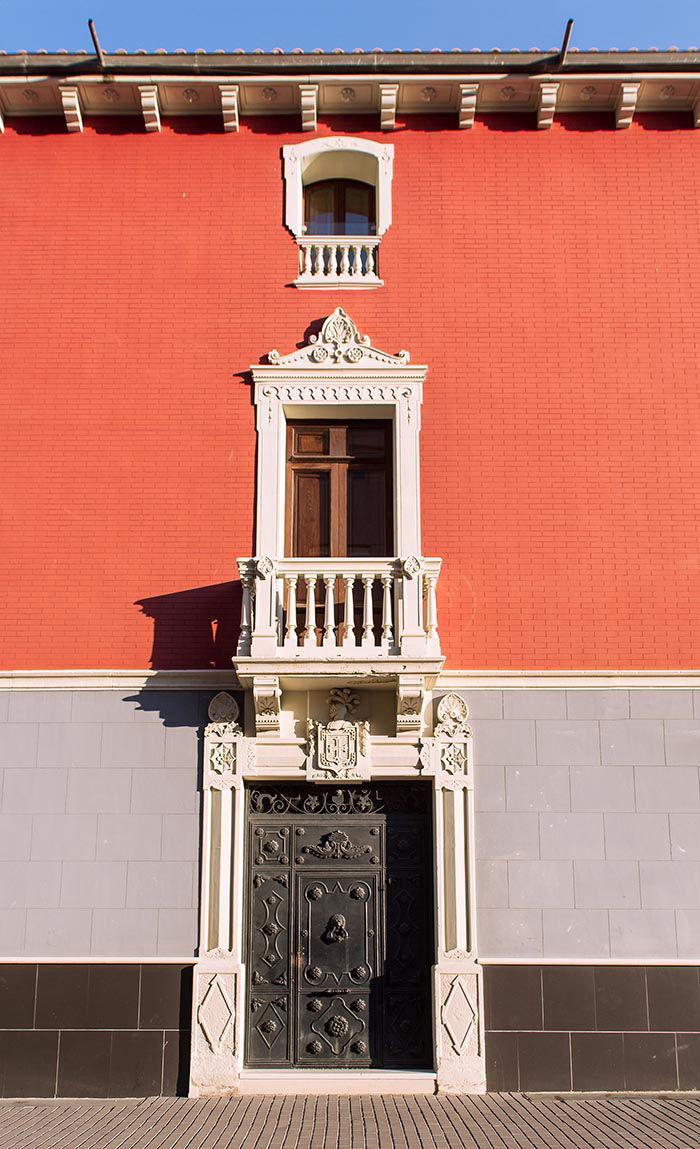
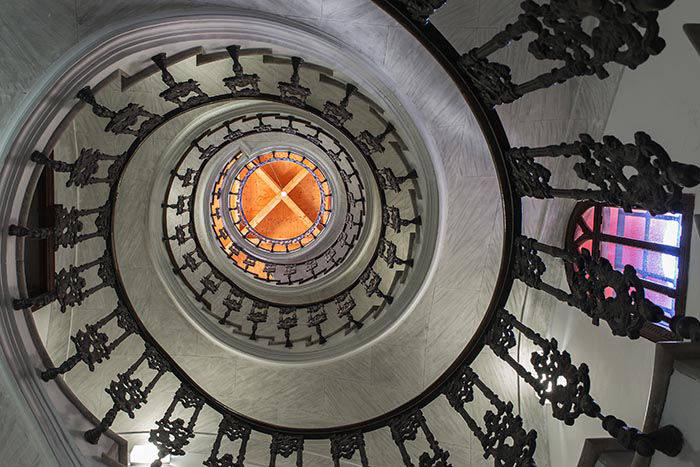
The Doll history room. The pioneer.
On this room floor you can see with the audioguide large earthenware jars that were used by the domestic service for the dressing of the Onil olive, a very important activity of the time which is still in use today.
Ramon Mira, a civil guard by profession and very fond of plastic arts (in the room there is a self-portrait exposed which shows how good he was as an artist), was the first doll maker in Spain using fire clay around 1877. He painted, applied make-up and decorated the dolls while his wife made their dresses.
Soon the fire clay, due to its fragility, was replaced by a home-made ointment made with carob bean flour, caustic soda, potato starch, sawdust, chopped pine bark and bits of cardboard, which was given the name of "mush". Once the mix was cold, it would fill in the iron and bronze molds to create the different doll’s parts (arms, legs, body and head). Later, these pieces would be joined together with a string so that the doll could have movement.
The pink color skin was achieved with the Granada fruit’s peel crushed and macerated with a mixture of lime. With the pulp of the same fruit, a cream was produced as rouge. The glowing of the dolls was achieved with pine resin.
His dolls were a sensation in the flea markets and bazaars of the time. Ramón Mira and his wife, Petra Garcia, came to have 50 workers, and joined forces with the married couple Juan-Mora. After the death of Ramón in 1897, his wife and children took charge of the workshop.
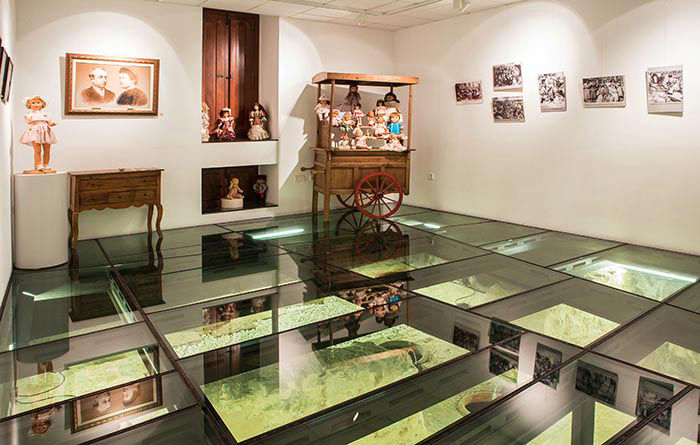
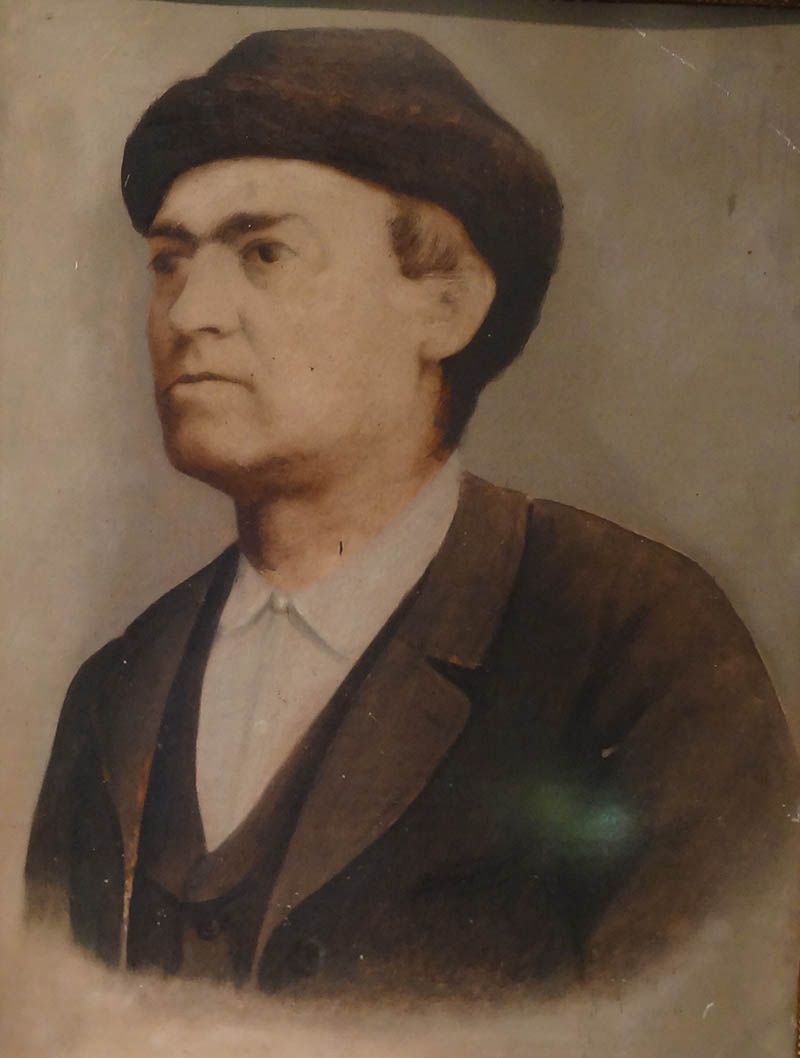
The followers of Ramon Mira’s legacy
The marriage made up by Eduardo Juan and Agustina Mora created the first truly modern doll factory, setting up the company "Eduardo Juan y Cia.", giving the doll of OniI an international reputation. The first cardboard dolls in Spain were born. The process can be seen in the photographs exposed in the room.
First, they gave shape to the arms, legs, body and head with the help of molds. They trimmed the pieces joining them with joints to give dolls movement, they were given putty and color, and makeup was applied. After a while in the drying room, they were decorated. Eyes, eyelashes and a mohair yarn wig were added, shoes were put on. Finally, the dolls were combed and dressed. The clothes and accessories were made by dressmaker and seamstresses. Each doll was unique.
In February 1919, after Eduardo Juan’s retirement, the company was sold to the "Francisco Merín and Sons" which continued with the production of dolls providing new machinery devised by José Merín, an engineer by profession.
During the first decades of the twentieth century, new firms such as "Blanquear and Cía.", "Rico S.A.", "Isidro Miralles Rico" and "Santiago Molina Sempere" were created among others. These factories were often provided with materials sold by the factory of Juan-Mora. The audioguide continues in the next section.
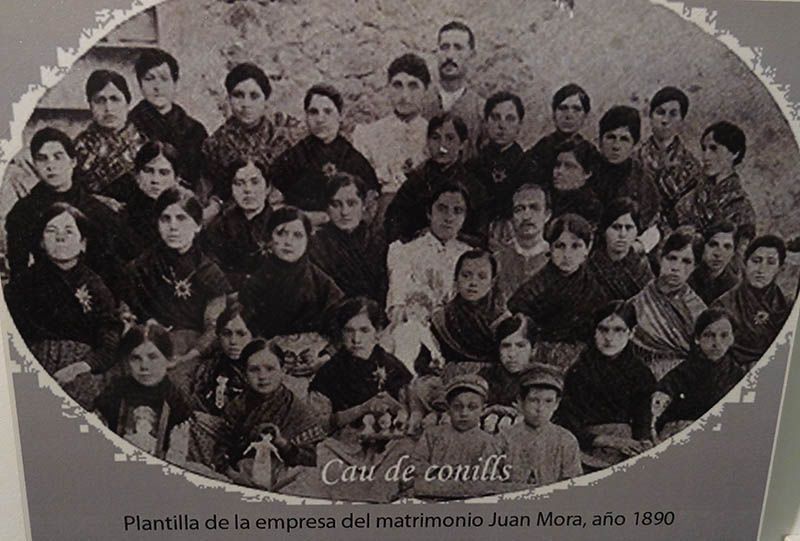
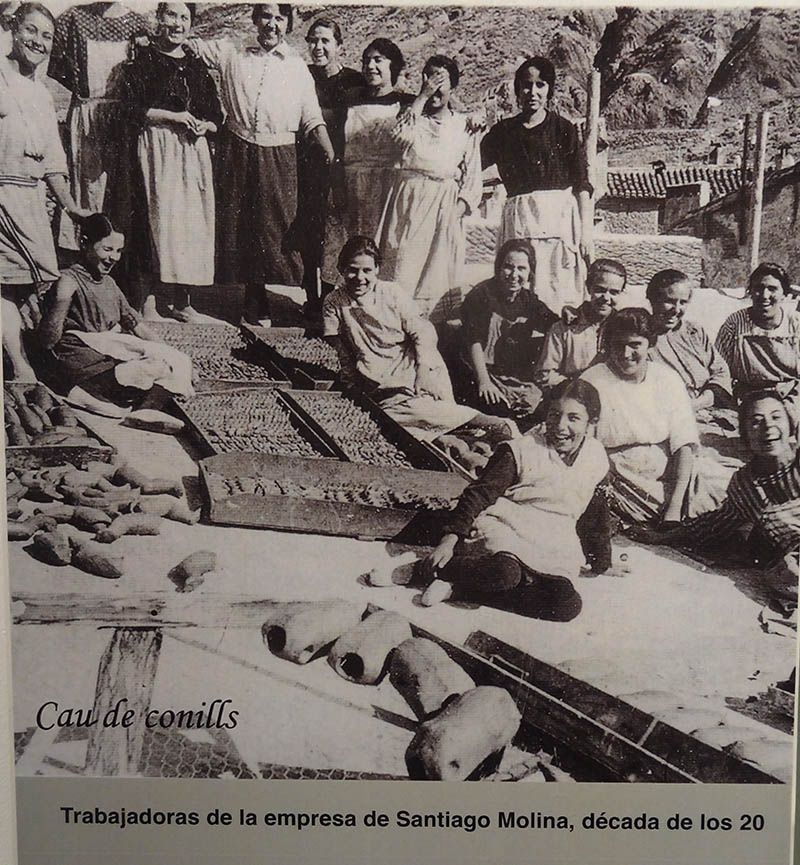
The Onil doll industry
After 1939, dolls were made with great effort by employers due to postwar precarious situation. The company José Berenguer began in 1944 and soon stood out with its dolls of great realism.
In 1946 Santiago Molina stood out with the Maricela Doll, made in Onil.
Also the same year, the firm Diana ran by Juan Isidro Rico Juan gave life to Cayetana doll, which was godmother to the Duchess of Alba. Made out of cardboard drenched with white glue, it was a great success in Spain.
In 1955 the two first machines for injecting plastics, the extruders, were installed in Onil, which heated the material to liquefy it in order to inject it into molds. It was the use of plastic which would allow the creation of dolls in many shapes and different colors. The different parts of the dolls were attached by elastic bands.
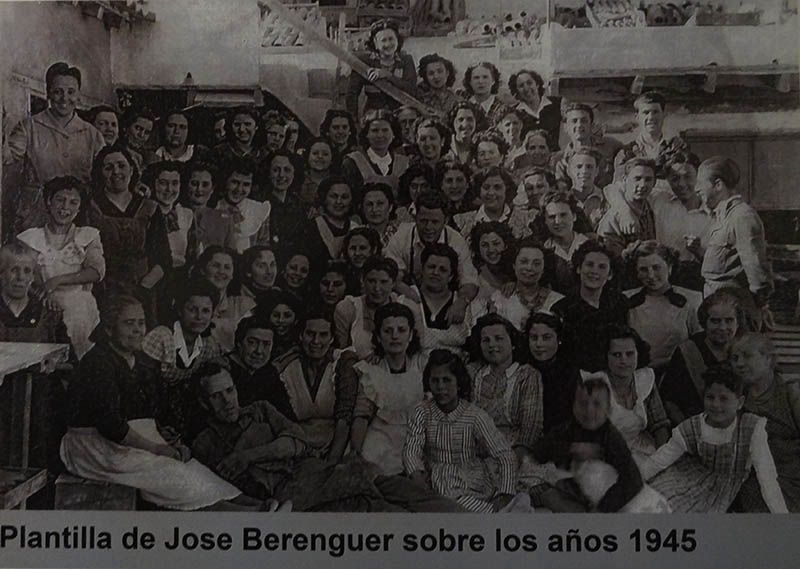
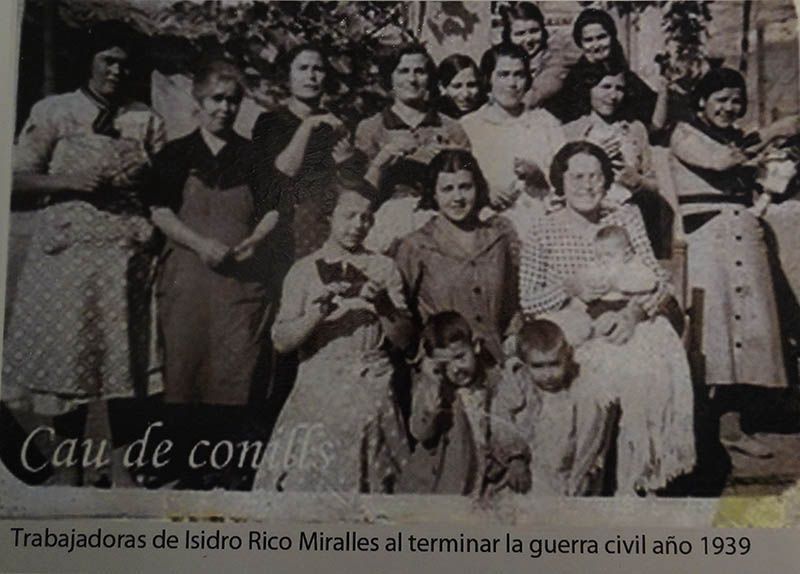
The creation of Famosa
The production of dolls in Onil would give an important leap after joining together most of the workshops under the same firm, allowing them to buy new machinery and being more competitive with a constant changing market, and avoiding the disappearance of many small businesses.
This took place in February 1957 when 25 small companies from Onil joined together to set up Famosa (Dolls Manufacturing Companies from Onil SA), being its first general manager Isidro Rico Juan. The market welcomed this new model very well and entrepreneurs were very optimistic with the new perspective. But the first serious drawback that Famosa faced came from inside the group itself, due to the desertion of four companies which dragged the majority of them to leave the holding. The fact that the companies were from the same town and even with family ties among them, contributed to this situation to happened. Only five companies which formed Famosa from the beginning decided to go ahead with the project. Let's continue now our tour with the audioguide.
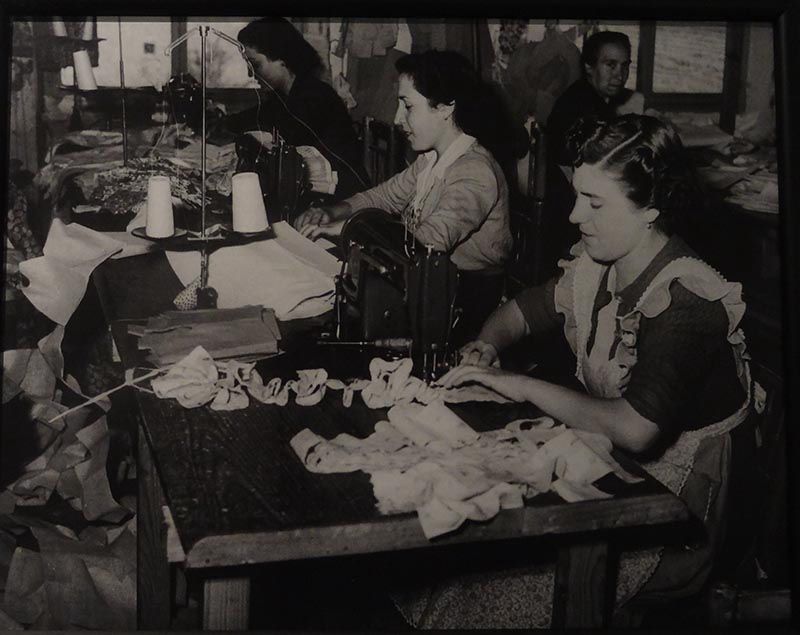
The dolls making room. First sketches
It used to take 30 artisans to make a doll. Today with new techniques only 21 are needed which reveals the difficulty of the task.
The manufacturing process of a doll begins with the drawing sketches. Once the image, identifying features, gestures, smile, and movements are defined, the artist sculpts in clay the different body parts (head, body, arms and legs) with the utmost care and detail possible, since the final product will be the true reflection of this clay sculpture.
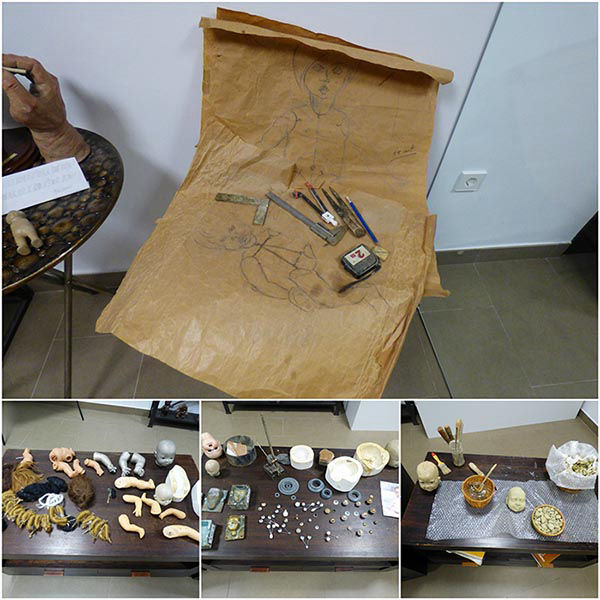
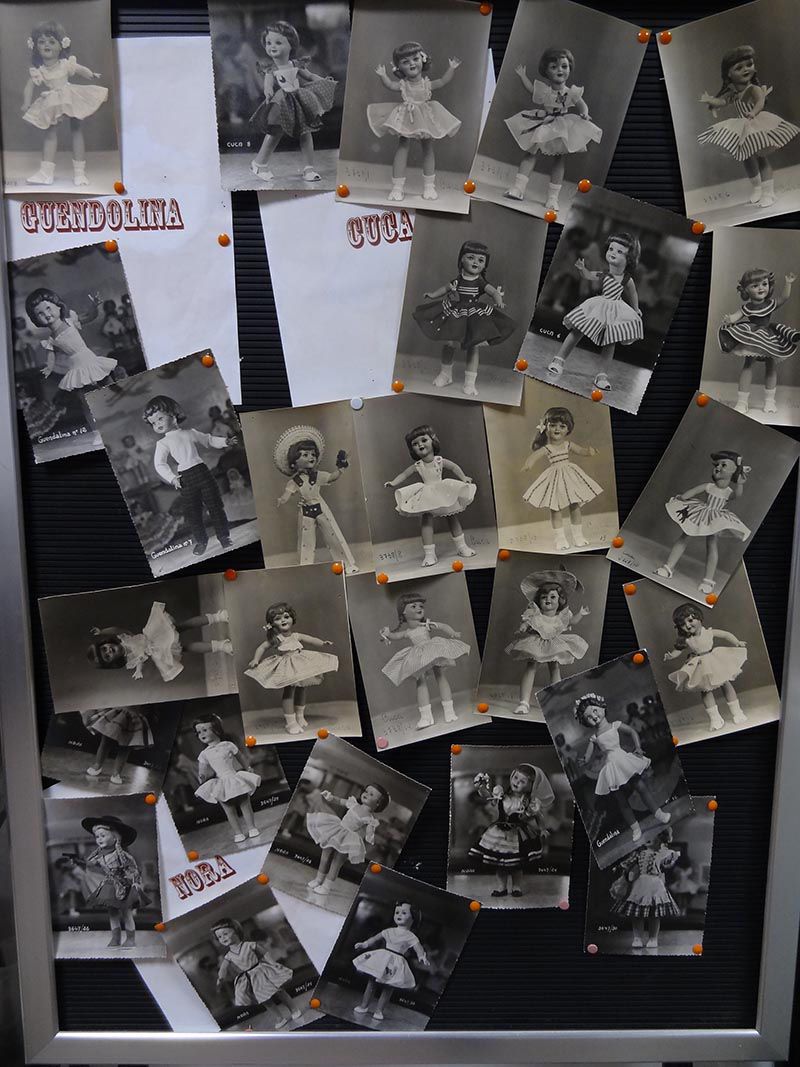
The molds
The next step related in this audioguide is to make the doll’s plaster molds to create also a wax sculpture. The wax parts (head, body, arms and legs) will be put into a nickel bath for several days to obtain the final molds coated with an outer layer of metal. Finally, wax is melted with heat, leaving the metal molds hollow and ready to make lots of dolls with a plastic material called vinyl.
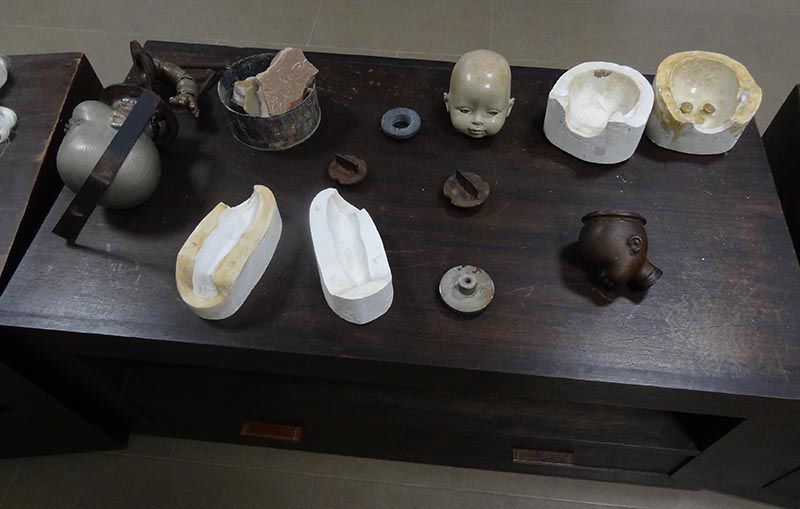
The furnace
The metal molds are filled with the exact amount of tinted vinyl with the color of the skin and place into the furnace at 250ºC for a few minutes. Inside the kiln, the molds spin around so that the vinyl gets shaped.
Once out of the furnace, the metal molds are opened, and with tweezers each piece is extracted carefully one by one as fast as possible, because if too much time goes by and the vinyl cools, you won’t be able to remove it from the metal mold. Lastly, the parts are washed in a drum with a solvent to remove any grease residue left from the furnace. Next step in the process will be described in the next section of this audioguide.
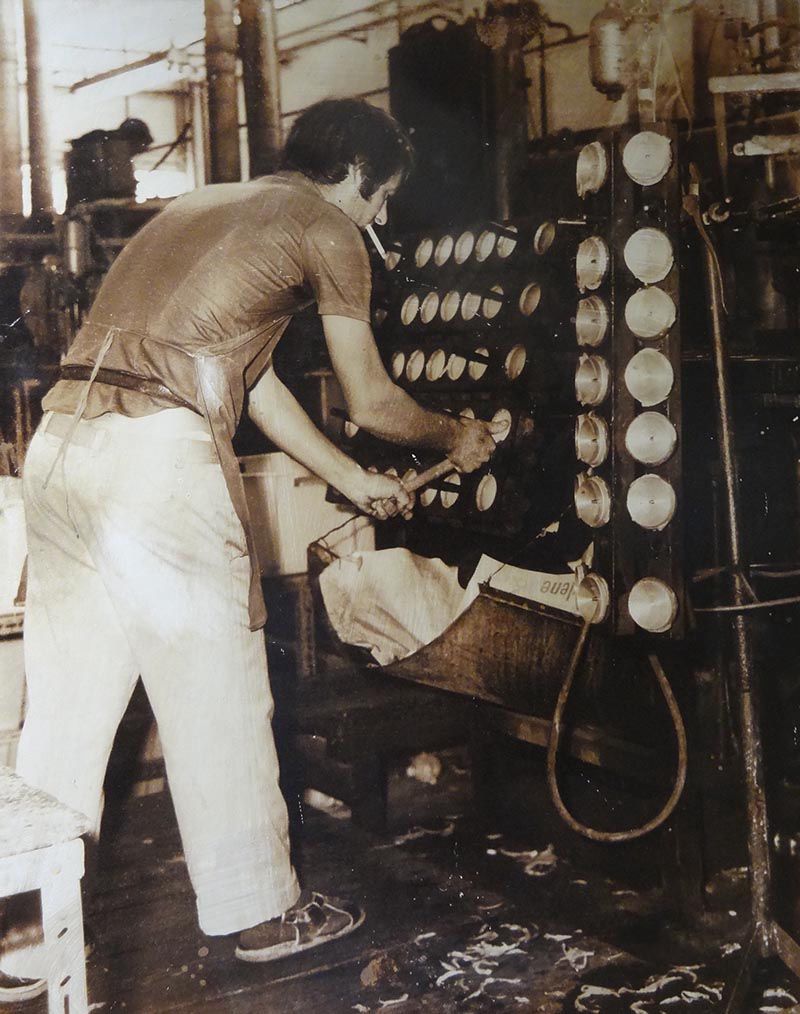
Painting, makeup and eyes
They are painted very carefully by overlaying on the doll’s face a mask with the lips and eyebrows punched. Next the face blushers, nails, folds and bruises in arms and legs are painted.
To put on the eyes, the head must be heated previously for 10 minutes and a machine with compressed air introduces the eyes. This process ensures that the eyes will not come off once the head is cooled. There are fix eyes and eyes which move thanks to a hidden rocker that closes them when the doll is lying down or open them when it is standing.
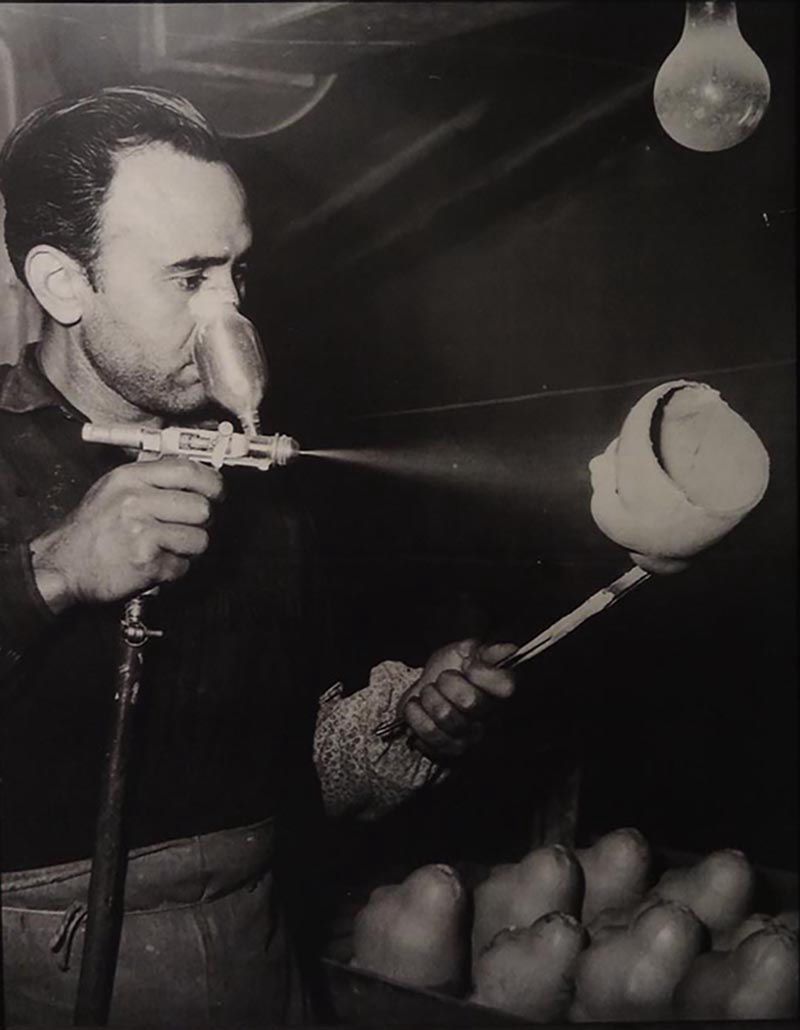
Hair and hairdressing
With a special machine that can be seen with the audioguide, with curved upholsterer needles the hair is sewn to the head. The hair is inserted drawing a spiral from outside to the center. The hair is inside a bag of several meters long which act like a spool of thread of a sewing machine. The machine takes the hair and cut it to the wished length marked by the size of the rotating disk.
The hair is made out of nylon and can be straight or curly thanks to a tubular machine that applies heat to give the desired curl. The smaller diameter of the hot tube is the biggest the curly gets. The hair, once sewn to the head, is watered and combed.
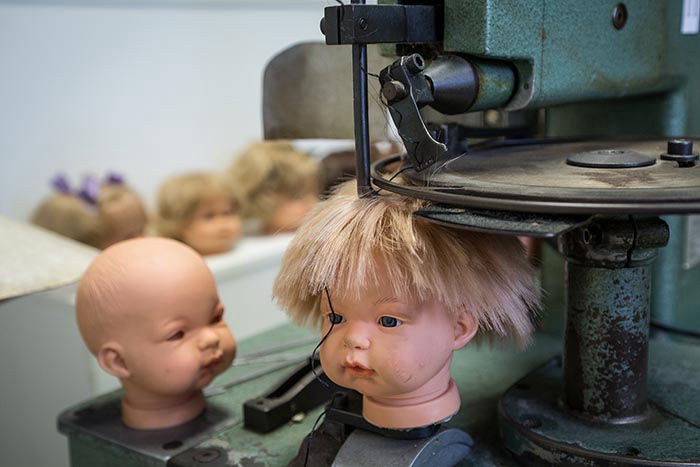
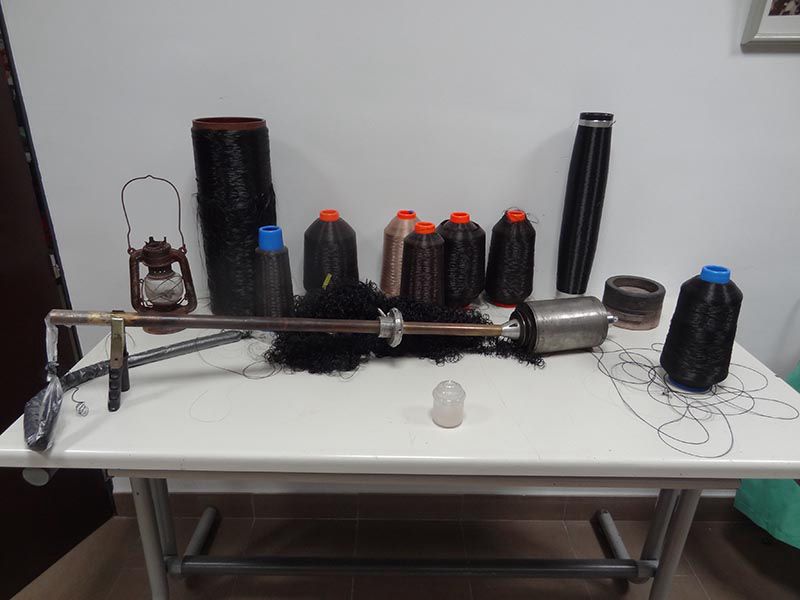
The Dressmaker
Next section of the audioguide, the dressmaker designs the clothing and takes measurements of the doll. Next the patterns are made on cardboard and drawn on fabrics to be cut later. The pieces are sewn together and finishes are added such as cuffs, pockets and zippers, also accessories such as a hood or a hat, and details such as a flower or a handkerchief. Lastly the dolls are dressed, put shoes on and perfumed.
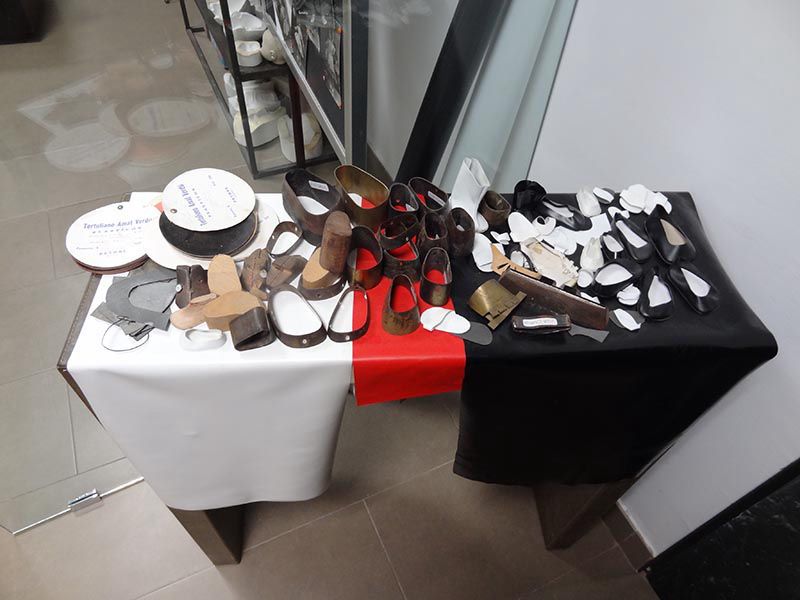
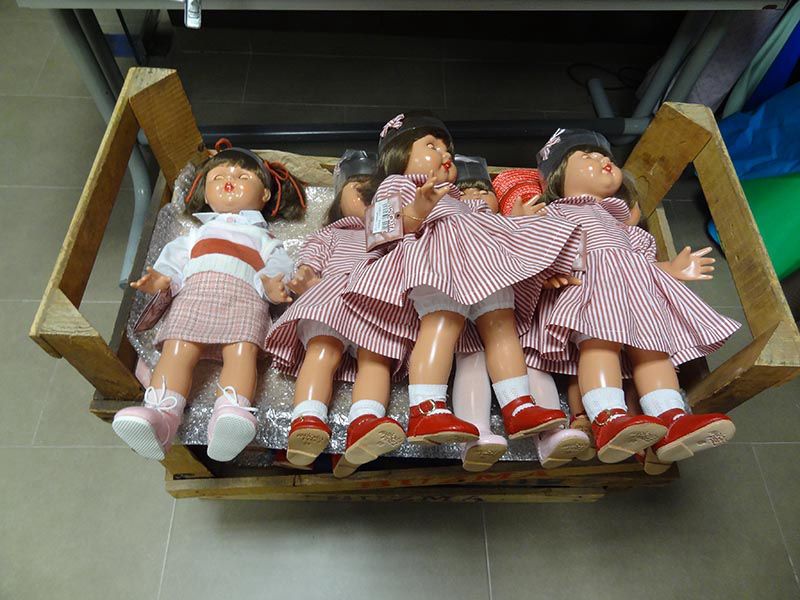
The Onil Doll Museum: Avenida la Paz "CASA DE L`HORT", Onil 03430.
Tourist Info Onil: Plaza Mayor, 1 – Palacio Municipal, 03430 – Onil (Alicante) España
Tel.: +34 965 565 365 / +34 606 02 33 07
www.onil.es - turismo@onil.es